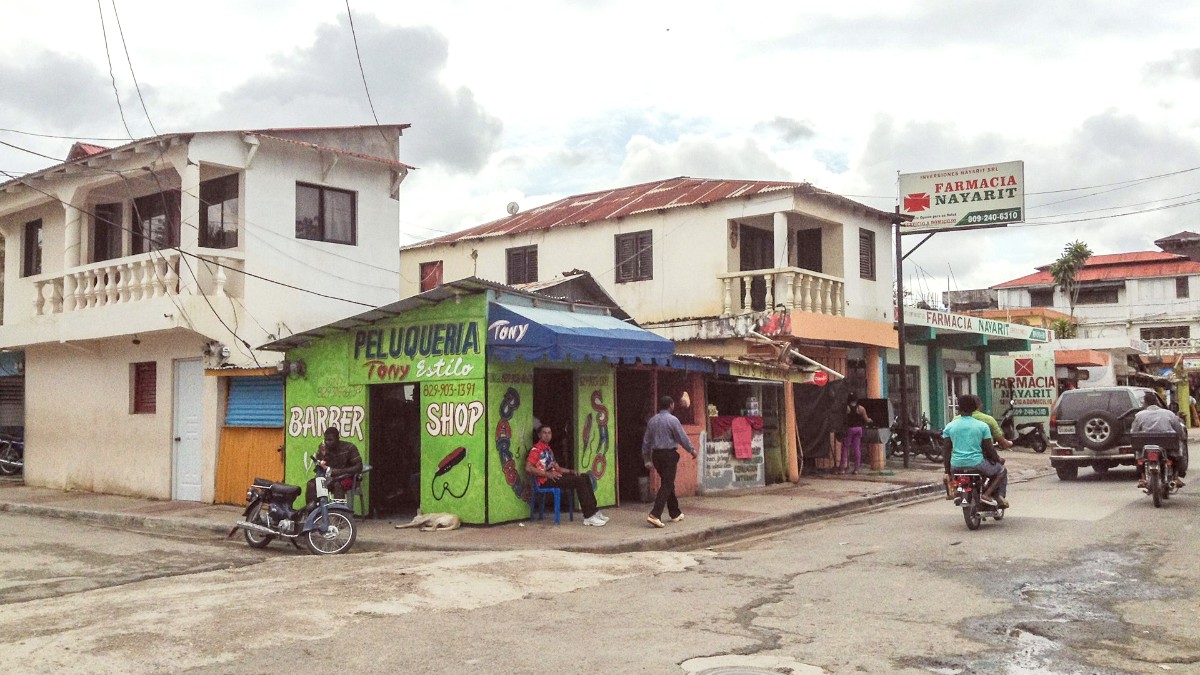
Peninsula De Samana, Dominican Republic
This guide charts a path to explore everything Las Terrenas holds, from its hidden coves to its lively streets.
This international influence means a wide array of amenities and services exist alongside local Dominican offerings. This blend creates a lively, bohemian vibe throughout Las Terrenas. Streets buzz with the cheerful sounds of motoconchos (motorcycle taxis), and diverse culinary aromas waft from open-air restaurants.
This international flavor makes for a comfortable travel experience, even for those new to the Dominican Republic.
Las Terrenas sits on the northeast coast of the Samaná Peninsula, an arm of land extending into the Atlantic Ocean from the Dominican Republic's northern shore. This location places it firmly within the Samaná Province, a region celebrated for its unspoiled natural environment. The town finds itself nestled on the Atlantic side of Hispaniola, the island shared by the Dominican Republic and Haiti. This coastal position brings access to a series of extensive white-sand beaches, each fringed by dense groves of towering coconut palms. The waters here shimmer with various shades of turquoise, reflecting the clear skies and rich marine life below.
Beyond the immediate coastline, the Samaná Peninsula rises into lush, green hills, part of the Cordillera Septentrional mountain range. These hills have tropical forests, home to diverse flora and fauna. Rivers and streams flow down from these highlands, often forming cascades and waterfalls as they make their way to the sea. The geography here involves a continuous interplay between land and water, creating microclimates and varied landscapes within a relatively small area. The prevailing trade winds, originating from the Atlantic, bring refreshing breezes year-round, moderating the tropical heat.
Stretches out, offering calm waters good for swimming and leisurely strolls.
Known for its striking natural division: one side calm, the other open ocean with consistent waves for surfers.
Extends for miles, offering a secluded experience with expansive sands and rolling surf.
Waters off Las Terrenas are part of this protected marine environment, recognized for its ecological importance.
Thousands temporarily inhabit Samaná Bay during their breeding season, creating a world-class whale-watching destination.
The Atlantic proximity also influences the marine ecosystem. The waters off Las Terrenas are part of the larger marine environment of Samaná Bay, a protected area recognized for its ecological importance. This bay becomes a temporary home for thousands of humpback whales during their breeding season, transforming the region into a world-class whale-watching destination.
The peninsula's isolated nature, historically, helped preserve its natural beauty, preventing widespread development seen in some other Caribbean destinations. This natural setting frames every experience in Las Terrenas.
The interaction between the land's geology and the ocean's currents creates a dynamic coastal zone, constantly shaped by the tides and the forces of nature.
This geographical diversity means travelers smoothly transition from relaxing on a sun-drenched beach to hiking through a verdant jungle or discovering hidden freshwater swimming holes, all within a short distance of the town.
Las Terrenas, though now a popular tourist destination, began its existence as a humble fishing village. The name "Las Terrenas" itself is a French origin, derived from "La Terrienne," which means "the landowner." This linguistic trace points to the early European presence and the establishment of land claims in the area. For centuries, life in this coastal enclave stayed simple, revolving around the rhythms of the sea and the cultivation of coconuts and other local produce. The village was relatively isolated, accessed mostly by sea or challenging overland paths, which helped preserve its character for a long time.
A transformation began in the 1970s and 1980s. During this period, European expatriates, especially from France and Italy, started discovering the undeveloped charm of Las Terrenas. Drawn by the pristine beaches, the laid-back lifestyle, and the welcoming local community, they began to settle here. This influx of foreign residents brought with it new ideas, investments, and different cultural influences. The quiet fishing village gradually expanded, developing small hotels, guesthouses, and restaurants to cater to the growing number of visitors and new residents. This growth was organic, driven by individuals rather than large-scale corporate development, allowing the town to hold a sense of its original Caribbean charm and a more authentic feel compared to purpose-built resorts.
Dominican traditions, deeply rooted in Spanish and African heritage, form the base. The Spanish language prevails, and national cuisine uses staples like rice, beans, and plantains, infused with local spices.
The strong European expatriate presence layered additional influences. French bakeries, Italian pizzerias, and international fusion restaurants operate alongside traditional Dominican comedores.
Haitian influences also play a part in the town's social and economic fabric. Many Haitian immigrants have settled in the Dominican Republic, contributing to its workforce and cultural diversity.
The result of this historical evolution is an unique cultural blend that defines Las Terrenas today. Architecture also mirrors this mix, with colorful wooden shacks reminiscent of the fishing village days standing near stylish villas and boutique hotels.
Picturesque beaches draw visitors, offering relaxation and various water activities. The coastline features diverse options for every preference.
A wide array of amenities and services exist alongside local Dominican offerings, creating a lively, bohemian atmosphere.
The accommodation landscape caters to various budgets, from charming boutique hotels to private villas and guesthouses.
Spanish is the official language. Many people in the tourism sector speak English and French.
The Dominican Peso (DOP) is the currency. Major credit cards acceptance occurs at larger establishments, but cash reigns for smaller purchases, local markets, and motoconchos.
Major credit cards are accepted at most hotels, larger restaurants, and supermarkets. Smaller shops, street vendors, and motoconchos typically require cash payments.